2013.01.17
Pieces of human bones shed light to Miyako past
Two human bones were discovered at Tomori Moto-Jima Ruin in Tomori district of Gusukube , Miyakojima City, Jan. 12.
One of the bones was discovered from a layer of soil dating back to the Aceramic Age 900B.C. ~ 100 A.D. This is the first time that human bones dating to the Aceramic Age have been found in Miyako Island.
Another bone is assumed to be from so called Gusuku Age from the 12th to 16th century because of nearby archaeological finds that have been dated back to the era.
In Miyako Island, the history from 100 A.D. of the end of the Aceramic Age to 1100 A.D. start of the Gusuku Age has been a blank era, but local people affiliated to the discovery expect that these finds will yield important hints for filling the blank.
The ruin site has been known dating back at least to the Gusuku Age, but an axe made from a giant clam in the Aceramic Age was found at the site in December last year, so the ruin was determined rather to be a mix, dating to between the Aceramic and Gusuku Ages, and to be the first such structure in Miyako Island.
A person in charge of the research and member of Miyako Island City Board of Education, Mitsugu Kugai said “We think that it is possible to clarify relations between the Aceramic and Gusuku Ages from the layer. Human bones can give much information. Maybe, we will be able to know where this human came from by investigating the DNA of the bones.”
A pottery jar that was the type produced for about 300 years starting from the 11th century on Tokunoshima in Kagoshima Prefecture, called “Kamuiyaki,” was discovered in undamaged condition close to the bone assumed to be from the Gusuku Age.
It is very rare to find a Kamuiyaki pottery item, which is likely a burial accessory, in a complete condition.
The research started in November last year in order to preserve the investigation records, because a resort facility is scheduled to be built on the site.

 2024.07.07
2024.07.07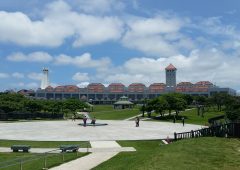 2024.06.21
2024.06.21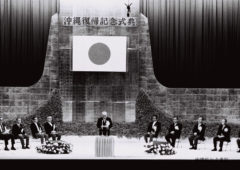 2024.05.15
2024.05.15 2024.02.07
2024.02.07 2024.01.31
2024.01.31 2023.11.02
2023.11.02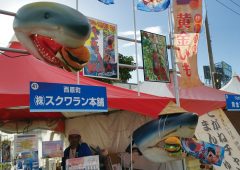 2023.10.26
2023.10.26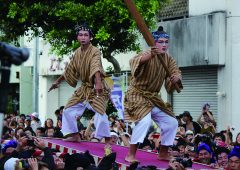 2023.09.29
2023.09.29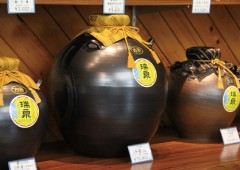 2023.09.01
2023.09.01






